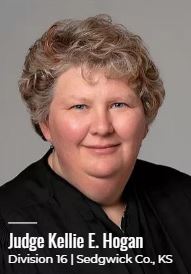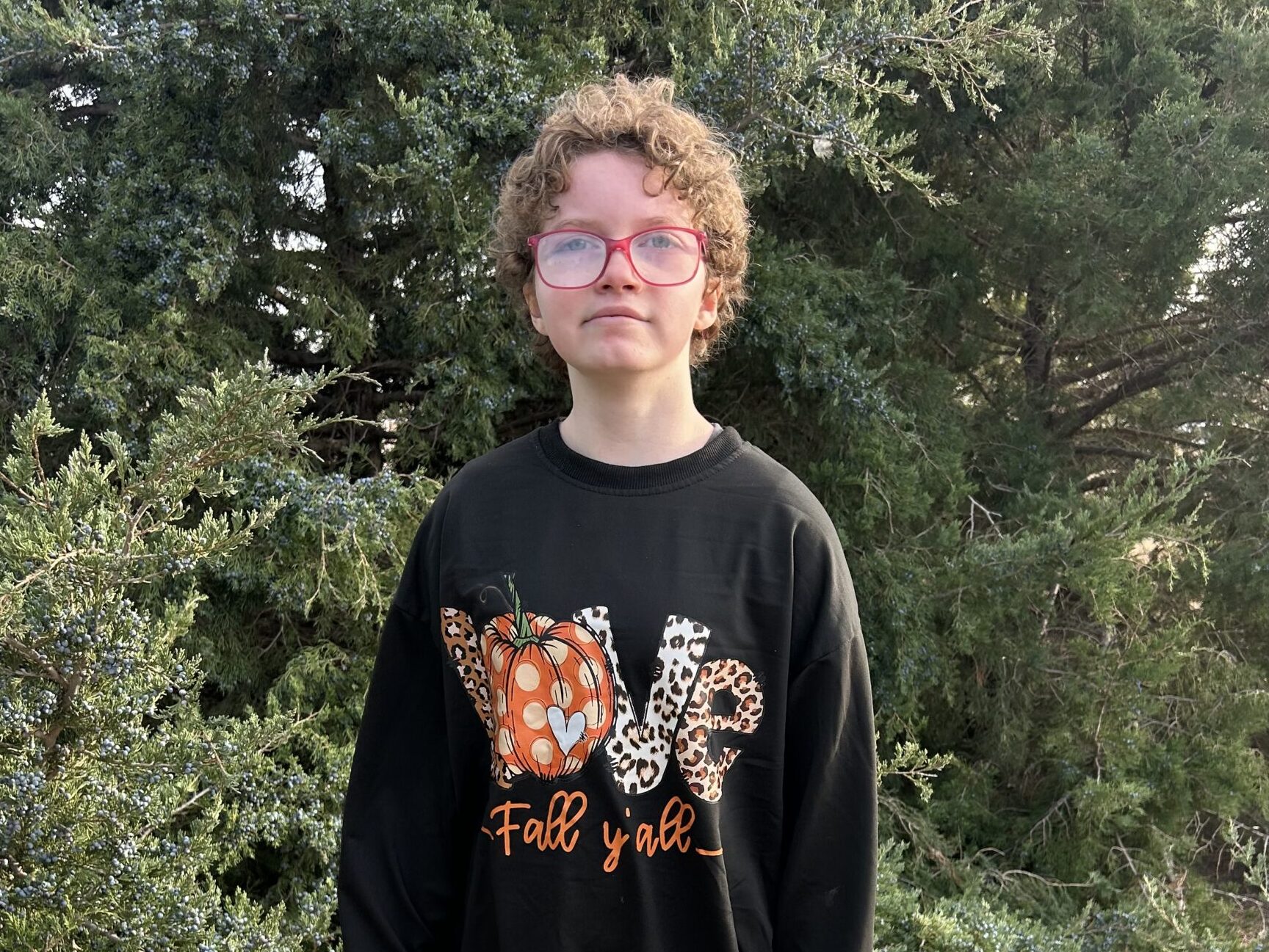When children are removed from their homes, it is usually through no fault of their own. They may be awakened in the middle of the night, wrapped in blankets, and driven to another house to spend the night with strangers. Most of their toys and clothes are often left behind.
Whether a toddler or a teenager, they have little control over what happens to them.
But one part of the court process is designed to give children a way to know that their perspective is heard as they enter into a complex system. This representative is the guardian ad litem, or GAL.
The federal Child Abuse Prevention and Treatment Act “requires states to document in their state plan provisions for appointing a guardian ad litem (GAL) to represent the child’s best interests in every case of abuse or neglect that results in a judicial proceeding,” according to the Child Welfare Information Gateway.
In Kansas, the GAL position is filled by an attorney.
“We can provide a voice for the child that they might not otherwise have,” said Dana Winkler, a retired assistant city attorney in Wichita, Kansas, who has been a GAL since 1999. “I’ve had some cases for as long as 10 or 12 years. The personnel involved over the period of a long-term case can vary a great deal. The institutional history of the child’s case, or at least the familiarity of it, rests with the court service officer and the guardian ad litem.”
Each state has different statutes that shape the appointment of a GAL and determine their responsibilities. Differences may include training and the types of cases are assigned GALs.
In Kansas, a GAL is assigned to every child in the system, said Megan Baker, a reintegration supervisor at Saint Francis Ministries. (See Kansas Standards for a GAL.)
“Their role is to determine what is in the best interests of the child in that situation,” she said. “They play a vital part in what happens in court, and they are the legal voice of the child.”
Sometimes, though, the role of the GAL can be misunderstood.
“I think the thing that is most confusing for people is that the GAL represents the best interests of the child, unlike a traditional attorney-client relationship where the attorney represents what the person wants,” explained Judge Kellie Hogan, District Court Judge in Sedgwick County. “How much weight a guardian ad litem will give to the opinion of the child definitely depends on the age of the child.”
Guardians ad litem are required by Kansas statute to do their own investigation of the cases they are assigned. Although their “best interest” decision about the case may be different than what the child wants, they are required by law to share the child’s opinion with the court, Judge Hogan said.
Her background as a GAL before her judicial appointment has given her an extensive understanding of their importance.
“A guardian ad litem is required to conduct an independent investigation,” Judge Hogan said. “They are looking at things like what services have been ordered, are they being performed, and making recommendations to the court about additional needs. I think judges generally give a lot of weight to a GAL’s opinion because while everybody in the same courtroom is there to promote the best interests of the child, each person has their own perspective based on who they represent. The GAL is the one person in the courtroom whose responsibility is solely the best interest of the child.”
Making sure their voices are heard
Baker said the GALs that she works with in western Kansas counties are important to the children. They have real conversations with the kids about how placement is going, their wants and needs, and their hopes for their future. Because the areas where she works are rural, there tend to be the same GALs assigned to cases, and her Saint Francis team has developed an excellent relationship with them.
Erica Lopez-Davis, a Saint Francis Ministries attorney, agreed wholeheartedly that the GAL role is important. In Kansas, GALs must do an independent investigation and they should be talking to all parties – foster parents, biological parents or relatives, teachers.
“I think that especially with our older youth, the guardian ad litem role is very important, especially when a child is conflicted or they have conflicting wishes about what they want to have happen,” she said. “It is the one avenue where they get to tell the guardian ad litem exactly what they want. Now, most likely the guardian ad litem is going to take that in conjunction with the remainder of their investigation and consider the services that are needed, the status of the parents, what their future looks like as far as whether it’s reintegration with parents, adoption or independent living.
“But they definitely are the voice of the child,” Lopez-Davis added, “and the child has that avenue to independently have a relationship with someone they feel like has their best interests at heart.”
GALs in Texas and Nebraska
The role of GALs in Texas is different than in Kansas.
“In Texas, our Texas Family Code gives a child legal representation from the attorney ad litem and also from a guardian ad litem. An attorney ad litem obviously is an attorney; a guardian ad litem may be an attorney and also may be a CASA (Court-Appointed Special Advocate),” said Cathy Cockerham, liaison for program development at Texas CASA.
If a CASA advocate is not available – and Texas CASA serves 60% of the children in the state’s custody at any given time – the attorney GAL may serve in a dual role, she said.
Most CASA volunteers in Texas today are appointed as GALs, Cockerham said. As in Kansas, the GAL represents the best interests of the child.
“The definition of the attorney ad litem is an attorney who provides legal services to a person, including a child, and who owes to the person the duties of undivided loyalty, confidentiality and competent representation,” Cockerham said.
“CASA as the GAL works alongside the attorney ad litem to represent the best interests of the child,” she added. “CASA has engaged in opening doors and pathways to permanency for those lost in the system for many years. CASA advocates have a new way of doing and thinking, using CFE (Collaborative Family Engagement) tools and practices to truly understand the ‘what happened to you’ story and to meaningfully seek supports and opportunities for reunification, well-being while in care, and a future that is safe and supported with lifelong connections.”
In Nebraska, the GAL operates in much the same way as in Kansas. They are appointed to every child welfare case in which the children are state wards, said Megan Blue, Saint Francis Nebraska executive director.
Again, the Nebraska GALs focus on serving the best interests of the child and giving them a voice in court and with other legal parties, Blue said. The work done by a GAL is critical, she said.
“More complex or difficult families or cases require more involvement from a GAL to ensure that the child’s needs are met and their voice is being heard,” Blue said. “In cases like these, there are many differing opinions and oftentimes it is helpful for a child to have a strong relationship with their GAL so that they can relay messages to the court as it relates to their best interests.”
Shaping the future for a child
The job of a GAL – of everyone in the child welfare system – is complex because each child and family comes with a different set of circumstances.
In Judge Hogan’s career, she’s seen those challenges many times. Children who have been through horrible abuse or neglect, she said, may still feel a strong connection to their parents. A child who was adopted and then the adoption fell through may end up being reconnected with their parents.
“The issues are complicated. The needs are great,” said Judge Hogan. “But I think you can assure your readers that attorneys who get involved in this area of law do it out of genuine concern for youth and not as a means to make money, since there’s really no money in representing children. When they take cases, they’re compensated at less than what they would get for a private case. They do this type of work because they do feel strongly about children and promoting their best interests.”
Hogan said she’s seen amazing commitment from GALs, some of whom drive hours to see a child placed outside their community. “That attorney who is willing to take that time and talk to the kid and the foster parents get a whole different perspective of what’s going on than may be shown in the professionally written court report,” she said. “It makes a difference.”
The Texas CASA team, of course, stands staunchly behind the work done by CASA GALs and their partnership with the AALs assigned to cases.
“I think it is a powerful combination,” Cockerham said. “The attorney brings the opportunity to get us back in court should we need to get back in court – the attorney ad litem can do legal things that CASA GAL cannot.”
What would Cockerham want people to know about GALs?
“If they had a child in the child welfare system, they would pray that they had a GAL by their side,” she said.
LEARN MORE:





